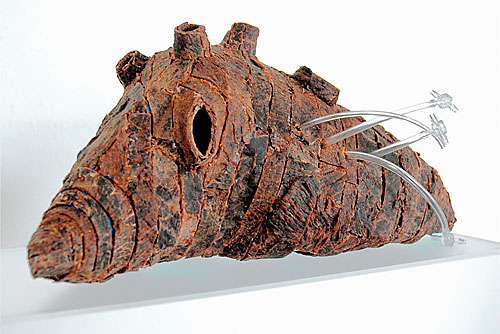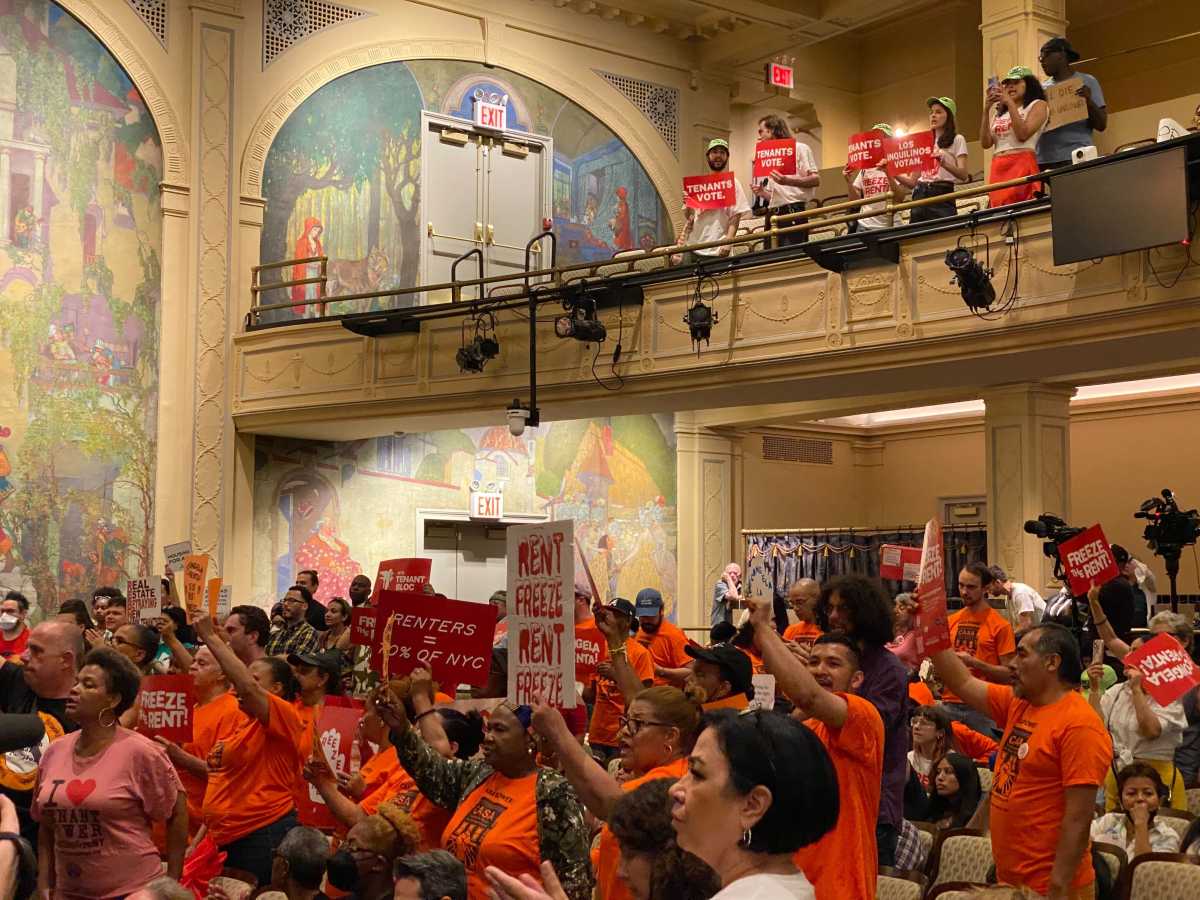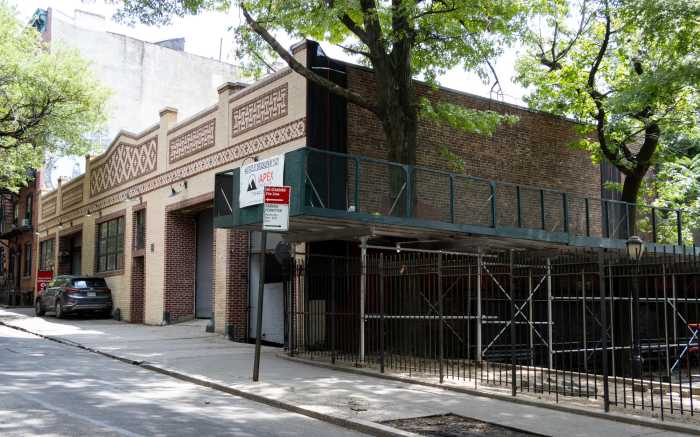Want to save the earth? How about living in a house made of pig flesh?
Sure, it sounds wonderful, but for now, it’s only a dream of
Mitchell Joachim and the other radical eco-architects of Terreform One, a Flatbush Avenue-based firm that not only designs buildings, but provocative visions of how we’re all going to live someday.
Of course, that means homes constructed from laboratory-grown animal flesh. But wait, there’s more.
“The apertures in the meat house will be sphincters,” Joachim said. “They seal up whenever you need them to.”
If you think a “meat house” is nothing more than pure fantasy, Joachim has a prototype he’d like to show you.
Made of dried pig flesh that wasn’t hacked off an animal, but grown in a Petri dish, Joachim’s prototype is only football sized — for now. He thinks that with better equipment and research — and, of course, a bit of old-fashioned pork in the form of grant money — he can make building-sized abodes (with extra sphincters, too).
The inspiration for the porcine concept came from a contest organized by People for the Ethical Treatment of Animals, which called for scientists to develop in-vitro meat for human consumption.
Joachim, who was named one of the “15 People the President Should Listen To” by Wired Magazine, took a different approach to the word, “consumption.”
“We were interested in winning the contest, but started work knowing that we were tweaking the rules quite a bit,” said Joachim.
To do so, Joachim got his hands on a line of pig cells, which he then nurtured in a sterile box in the Metropolitan Exchange Building on Flatbush Avenue.
The dreadlocked scientist then put the cells in a syringe, which he injected into a modified inkjet printer that “printed” out the flesh for the house.
Joachim then turned the meat into jerky and erected his fleshy model crib.
Still, the house is just a prototype — nothing more than a dwelling with pseudo Slim Jims where other builders might use two-by-fours.
What Joachim really wants is a living house.
“The thing died.” Joachim said. “There is no way to keep it alive. It has no circulatory system, no immune system. … We want to create skin systems for performative facades — facades that act as if they’re living.”
In other words, sphincter windows and doors that — ahem — tighten up when an unwanted guest arrives at the door, and a roof that responds to changes in temperature the same way pores do.
For now, Joachim’s model will remain only an unsettling twist on pork products. Terreform One’s office just doesn’t have the space for full-sized meat abode.
Isn’t it always the case in New York City? There’s just never enough room for your dream house.
























